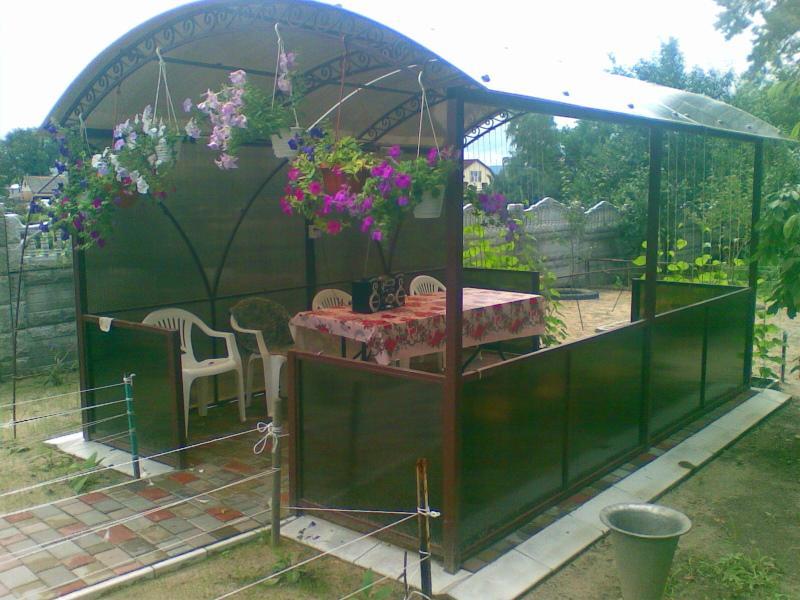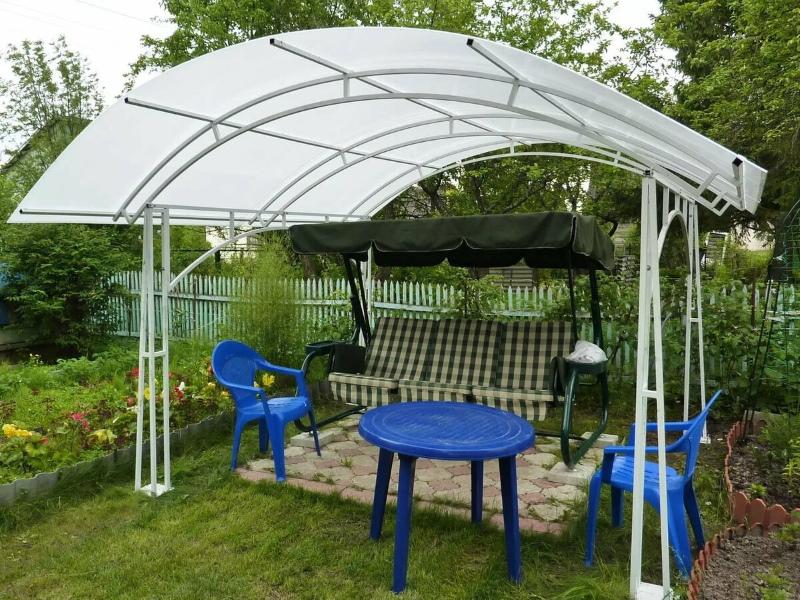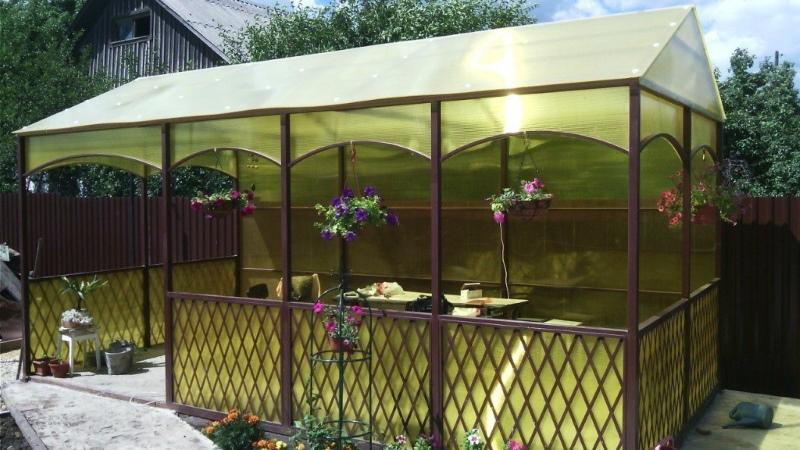DIY polycarbonate gazebo, photo
 Who refuses to while away the summer evening in a beautiful wooden gazebo in the fresh air? However, such a pleasure costs a lot, a do-it-yourself polycarbonate gazebo is much cheaper (the photo will be further). This applies to both the price of the material and its practicality in use.
Who refuses to while away the summer evening in a beautiful wooden gazebo in the fresh air? However, such a pleasure costs a lot, a do-it-yourself polycarbonate gazebo is much cheaper (the photo will be further). This applies to both the price of the material and its practicality in use.
The advantages of polycarbonate and structures from it

Of the advantages of a polycarbonate gazebo, it is worth noting the following points:
- it weighs little and can be portable;
- easily disassembled if necessary;
- does not require a foundation, again, due to its low weight;
- will serve for at least 20 years "without repair": polycarbonate is not afraid of moisture, ultraviolet frost, plus does not burn;
- transmits light, but does not heat up (transparent sheets).
It is important that the installation of the gazebo is not particularly difficult. The flexible material will bend in the desired direction and can be easily cut and drilled.
DIY polycarbonate gazebo, photo
 It goes without saying that the polycarbonate sheets have to hold on to something. The frame can be made of wood or metal. Let's briefly consider both options.
It goes without saying that the polycarbonate sheets have to hold on to something. The frame can be made of wood or metal. Let's briefly consider both options.
Combination of polycarbonate and wood
 All wooden parts must be pretreated - impregnated with special means for protection. The sequence of work is as follows:
All wooden parts must be pretreated - impregnated with special means for protection. The sequence of work is as follows:
- Install a columnar foundation. Dig holes, put up wooden supports and fill them with concrete.
- Install the frame for the floor using logs. Make wood flooring from planks.
- Fasten the top harness of thick beams for roofs... Make rafters and battens and attach polycarbonate to them.
- Make walls depending on your desire. You can completely sew up the gazebo with polycarbonate sheets, or put only a wooden railing.
Supports, railings and all wooden parts of the gazebo should preferably be varnished or painted.
Polycarbonate gazebo with metal frame
 For the manufacture of the frame, it is better to take steel pipes with a diameter of at least 50 mm. Metal corners 40x40 mm will go to the rafters, strapping and fencing.
For the manufacture of the frame, it is better to take steel pipes with a diameter of at least 50 mm. Metal corners 40x40 mm will go to the rafters, strapping and fencing.
The robot itself is like a wooden gazebo:
- Install pipes for the frame in the dug holes, concreting them.
- Make the lower strapping - weld the corners to the pipes, lay logs on them and lay a wooden flooring. Instead, you can simply pour concrete over the floor.
- Weld on the transverse supports and the upper rail.
- Sheathe the gazebo with polycarbonate, making holes in the corners.
Metal parts also need to be treated against corrosion.